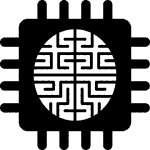Electrical and Computer Engineering, Department of
Document Type
Article
Date of this Version
2-22-2002
Citation
2002 SPIE and IS&T.
Abstract
In this work we develop a method for assessing the information density and efficiency of hyperspectral imaging systems that have spectral bands of non-uniform width. Imaging system designs with spectral bands of nonuniform width can efficiently gather information about a scene by allocating bandwidth among the bands according to their information content. The information efficiency is the ratio of information density to data density and is a function of the scene’s spectral radiance, hyperspectral system design, and signal-to-noise ratio. The assessment can be used to produce an efficient system design. For example, one approach to determining the number and width of the spectral bands for an information- efficient design is, to begin with a design that has a single band and then to iteratively divide a band into two bands until no further division improves the system’s efficiency. Two experiments illustrate this approach, one using a simple mathematical model for the scene spectral-radiance autocorrelation function and the other using the deterministic spectral-radiance autocorrelation function of a hyperspectral image from NASA’s Advanced Solid-State Array Spectroradiometer. The approach could be used either to determine a fixed system design or to dynamically control a system with variable-width spectral bands (e.g., using on-board processing in a satellite system).



Comments
Journal of Electronic Imaging 11(3), 347–353 (July 2002).